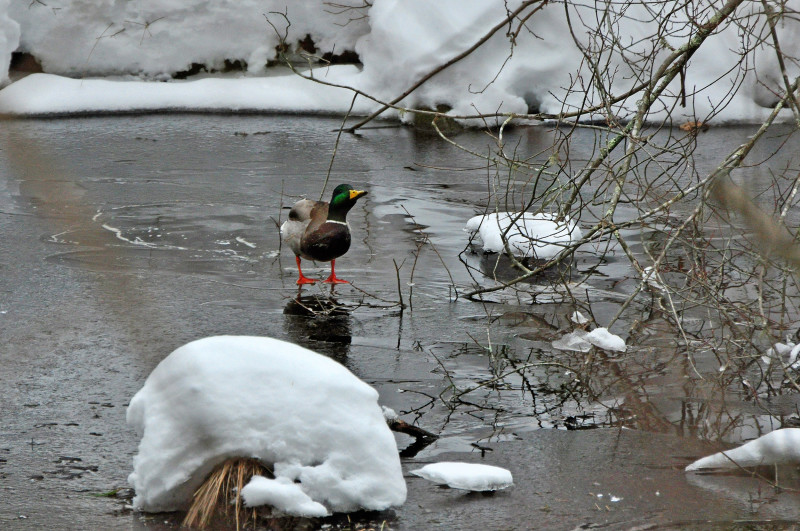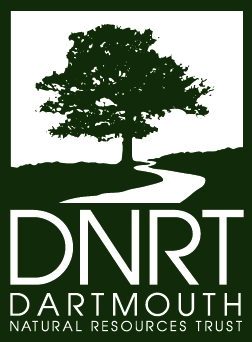Destruction Brook Woods
As the largest reserve managed by the Dartmouth Natural Resources Trust, Destruction Brook Woods has something for everyone to love. Footbridges span a babbling brook, and miles of trails weave through hundreds of acres of rolling woodlands. Take a journey through this beautiful site, and you’ll truly appreciate the natural beauty of Dartmouth’s woods and waters.
Features

Keep an eye out for ducks and other birds on Destruction Brook throughout the year.
Don’t let its name fool you: Destruction Brook Woods is packed with unparalleled beauty. From the trails, you can listen to the lyrical sound of water as it journeys through the woods. This stream, Destruction Brook, flows to the Slocums River and eventually to Buzzards Bay.
You’ll find unique historical and ecological features hidden in the woods here, too, including an old mill and farmstead. One of our favorite spots within Destruction Brook Woods is Happy Valley, an area of exposed bedrock and towering glacial erratics covered in ferns and moss.
Trails
Destruction Brook Woods has an extensive, 10-mile network of forest paths and stream crossings. The trails are clearly marked with colors and letters, so the property is easy to navigate in spite of its size. (Download trail map)
From the Slades Corner Road parking area, begin your walk on the Red Trail. This wide, clear 1.5-mile loop treats hikers to scenic features including Ella’s Bridge, Alice’s Spillway, and the serene Pine Glade. From the Red Trail, hikers can connect with the Green Trail or the Yellow Trail.
The Green Trail is a 4-mile forest loop that leads to Destruction Brook’s northwest corner. The trail treks through historic sites like the P. Russell Homestead and Gidley Cemetery. There are a few steep spots here, particularly near the stream.
The Yellow Trail is a 1.7-mile loop that meanders through woods and wetlands before it connects with the Fisher Road parking area and the Blue Trail. The Blue Trail is a steeper, narrower 1.6-mile loop that runs through hilly upland forests and Happy Valley.
Habitats & Wildlife
Ferns, flowers, and lichen flourish in the mixed pine and hardwood forest at Destruction Brook Woods. The forest includes beech trees and rare Atlantic white cedars, which only grow in wet areas very close to the coastline.
As a freshwater stream, Destruction Brook plays host to many different types of birds. Look for ducks and herons hiding in the brush along the water. Up in the trees, hawks and owls keep an eye out for prey. In addition to the birds, a variety of frogs, turtles, and woodland mammals call Destruction Brook home.

 Download Property Map
Download Property Map